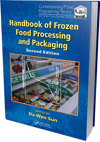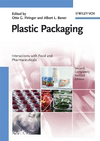In the run-up to K 2013, the European plastics industry finds itself fighting battles on several fronts, many of them conditioned by the uncertain state of the overall economy in the region. Austerity measures in many countries have affected investments in building and construction projects; consumers are not buying as many new cars as they used to; smaller, more affordable products that continue to sell well, such as smartphones and tablets, are made elsewhere.
But Europe continues to be strong in development, production and use of performance plastics. Victrex, for example, recently said it would increase capacity for Victrex polyaryletherketone (PAEK) polymers at its operations in Thornton Cleveleys, England by around 70 percent. PAEK polymers (of which PEEK is the most famous) are used across a wide and growing range of applications in the transport, industrial and electronics sectors.
The downturn in the European automotive industry has important consequences in the supply chain. Automotive production in Western Europe could fall by as much as 8.5 percent in 2013. This is likely to affect business and investments at plastics component suppliers.
An exception to this trend does appear to be the UK. “The UK automotive industry has benefited from investments in new generations of vehicles, we are experiencing a renaissance of industrial activity for automotive industry suppliers,” says Philip Law, public & industrial affairs director at the British Plastics Federation. “A significant volume of business is returning to the UK.”
Despite automotive woes, the plastics processing sector, in Germany at least, continues to grow at least as quickly as GDP. Turnover was at a record high in 2012, although growth slowed to GDP levels, according to German plastics processors trade association GKV.
Oliver Möllenstädt, managing director of the GKV, believes that, because of higher relative production costs (energy, and also labor) in comparison with other world regions, the European plastics converting industry will concentrate on products with higher value added and innovative products. “The converting industry in Germany in 2012 had nearly the same turnover as in the year before but the raw material input decreased,” says Möllenstädt.
Sales of plastic packaging and films in Germany actually fell, by 0.4 percent in 2012, according to the IK trade association responsible for plastics packaging, noting that packaging manufacturers continued to face increases in raw material prices and higher energy prices. However, it says growth should return this year, and its members are "optimistic" for the second quarter.
A Wind of Change
Bioplastics still occupy a niche of the plastics market in Europe, but that niche is growing, helped by developments in technology that give them improved properties, and also by changes in legislation. Non-biodegradable plastic carrier bags are now being phased out in Italy by law, and bags made from biodegradable materials like Novamont’s MaterBi are taking their place. Other European countries could follow suit. The European Commission is now assessing options to reduce single-use plastic carrier bags across the EU. The European Bioplastics trade association wants to make sure that a supportive framework is put in place at EU and Member State level to attract investments.
At the moment, there are numerous local initiatives ongoing to boost bioplastics production in Europe. In Sardinia, for example, Italian energy company Eni, through its chemicals subsidiary Versalis (previously Polimeri Europa), has formed Matrica, a “green chemistry” joint venture with Novamont, where new production facilities will be established for bio-based monomers, intermediates for elastomers and plastics, and fillers.
The Dutch government, meanwhile, has set its sights on The Netherlands becoming known as “the land of green chemistry” by 2050, and one of the largest bio-based economies in the world. Not only tulips grow in the country: it has ample farming land and is a major grower of sugar beet which is a prime bioplastics feedstock.
European Machinery Manufacturers Remain Buoyant
Across Europe, major machinery manufacturers continue to invest. For example, in Austria, Engel will spend Euro 12 million at its Schwertberg headquarters, where it will extend its assembly and shipping area for injection molding machines; Sumitomo Heavy Industries has put Euro 20 million aside for the production modernization at its Sumitomo (SHI) Demag operations in Schwaig and Wiehe, Germany.
Germany remains the European plastics processing machinery powerhouse. Sales from German plastics and rubber machinery manufacturers rose 6 percent in 2012, reaching a new record. Sales peaked at Euro 6.5 billion, beating the record of Euro 6 billion in 2011. The previous record had been in pre-recession 2008. Traditional markets are reviving, with German manufacturers experiencing above-average growth in the EU as well at the U.S. Poland is now the largest EU market for German machinery.
Machinery exports to Asia from Italy, Europe’s second largest plastics machinery building country, fell in percentage terms last year, says machine builders’ association Assocomaplast, pointing out that “trends which emerge from the regional break-down of the sector’s exports – and namely an increase in sales to Europe and North America set against decline in sales to South-America and, even more so, to Asia – have also been felt in the other countries that manufacture this type of machinery.”
In the run-up to K 2013, the European plastics industry finds itself fighting battles on several fronts, many of them conditioned by the uncertain state of the overall economy in the region. Austerity measures in many countries have affected investments in building and construction projects; consumers are not buying as many new cars as they used to; smaller, more affordable products that continue to sell well, such as smartphones and tablets, are made elsewhere.
But Europe continues to be strong in development, production and use of performance plastics. Victrex, for example, recently said it would increase capacity for Victrex polyaryletherketone (PAEK) polymers at its operations in Thornton Cleveleys, England by around 70 percent. PAEK polymers (of which PEEK is the most famous) are used across a wide and growing range of applications in the transport, industrial and electronics sectors.
The downturn in the European automotive industry has important consequences in the supply chain. Automotive production in Western Europe could fall by as much as 8.5 percent in 2013. This is likely to affect business and investments at plastics component suppliers.
An exception to this trend does appear to be the UK. “The UK automotive industry has benefited from investments in new generations of vehicles, we are experiencing a renaissance of industrial activity for automotive industry suppliers,” says Philip Law, public & industrial affairs director at the British Plastics Federation. “A significant volume of business is returning to the UK.”
Despite automotive woes, the plastics processing sector, in Germany at least, continues to grow at least as quickly as GDP. Turnover was at a record high in 2012, although growth slowed to GDP levels, according to German plastics processors trade association GKV.
Oliver Möllenstädt, managing director of the GKV, believes that, because of higher relative production costs (energy, and also labor) in comparison with other world regions, the European plastics converting industry will concentrate on products with higher value added and innovative products. “The converting industry in Germany in 2012 had nearly the same turnover as in the year before but the raw material input decreased,” says Möllenstädt.
Sales of plastic packaging and films in Germany actually fell, by 0.4 percent in 2012, according to the IK trade association responsible for plastics packaging, noting that packaging manufacturers continued to face increases in raw material prices and higher energy prices. However, it says growth should return this year, and its members are "optimistic" for the second quarter.
A Wind of Change
Bioplastics still occupy a niche of the plastics market in Europe, but that niche is growing, helped by developments in technology that give them improved properties, and also by changes in legislation. Non-biodegradable plastic carrier bags are now being phased out in Italy by law, and bags made from biodegradable materials like Novamont’s MaterBi are taking their place. Other European countries could follow suit. The European Commission is now assessing options to reduce single-use plastic carrier bags across the EU. The European Bioplastics trade association wants to make sure that a supportive framework is put in place at EU and Member State level to attract investments.
At the moment, there are numerous local initiatives ongoing to boost bioplastics production in Europe. In Sardinia, for example, Italian energy company Eni, through its chemicals subsidiary Versalis (previously Polimeri Europa), has formed Matrica, a “green chemistry” joint venture with Novamont, where new production facilities will be established for bio-based monomers, intermediates for elastomers and plastics, and fillers.
The Dutch government, meanwhile, has set its sights on The Netherlands becoming known as “the land of green chemistry” by 2050, and one of the largest bio-based economies in the world. Not only tulips grow in the country: it has ample farming land and is a major grower of sugar beet which is a prime bioplastics feedstock.
European Machinery Manufacturers Remain Buoyant
Across Europe, major machinery manufacturers continue to invest. For example, in Austria, Engel will spend Euro 12 million at its Schwertberg headquarters, where it will extend its assembly and shipping area for injection molding machines; Sumitomo Heavy Industries has put Euro 20 million aside for the production modernization at its Sumitomo (SHI) Demag operations in Schwaig and Wiehe, Germany.
Germany remains the European plastics processing machinery powerhouse. Sales from German plastics and rubber machinery manufacturers rose 6 percent in 2012, reaching a new record. Sales peaked at Euro 6.5 billion, beating the record of Euro 6 billion in 2011. The previous record had been in pre-recession 2008. Traditional markets are reviving, with German manufacturers experiencing above-average growth in the EU as well at the U.S. Poland is now the largest EU market for German machinery.
Machinery exports to Asia from Italy, Europe’s second largest plastics machinery building country, fell in percentage terms last year, says machine builders’ association Assocomaplast, pointing out that “trends which emerge from the regional break-down of the sector’s exports – and namely an increase in sales to Europe and North America set against decline in sales to South-America and, even more so, to Asia – have also been felt in the other countries that manufacture this type of machinery.”








